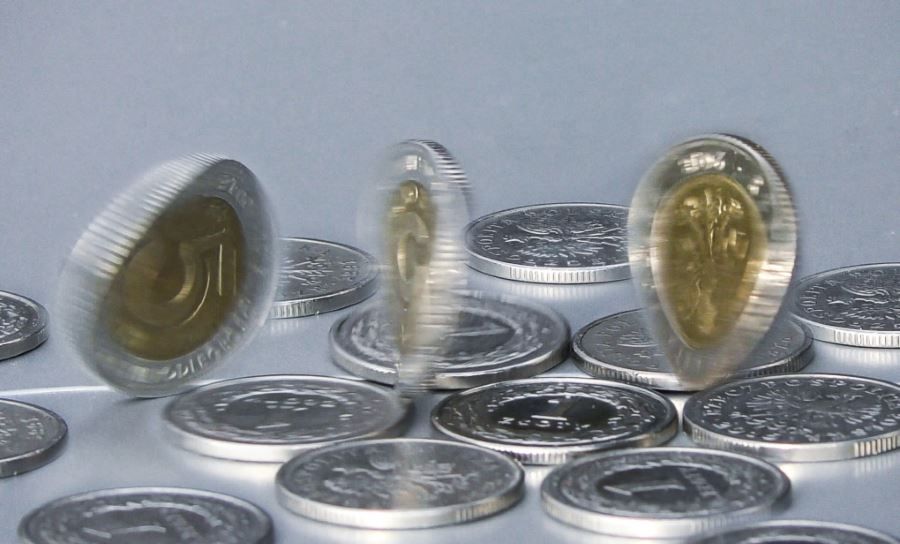
Krakow researchers have demonstrated the possibility of the existence of states "classical-quantum"
Quantum reality seems exotic to us for good reason. Quantum properties we simply do not perceive with our senses. But, according to scientists from the Institute of Nuclear Physics of the Polish Academy of Sciences and the Jagiellonian University, the boundary between the exotic quantum reality and the classical one need not be as sharp as it might seem.
Krakow scientists have shown that quantum states can exist, ktore, on the one hand, exhibit the most characteristic quantum properties and, on the other hand, are as close to classical states as is possible within the framework of quantum mechanics. The results of the research were published in „Coherent States and Their Applications: A Contemporary Panorama”.
Our everyday world seems more familiar to us. Most things can be precisely measured in it. Each object exists in a specific place in space and in a specific state. It is not capable of immediate response to what is happening to other objects far away from it. But the quantum world is diametrically rothat is different from the classical one. Instead of certainty we have only probability, objects can reside in roof different locations and states at the same time, and thanks to the phenomenon of quantum entanglement, they appear to react instantly to whatever has happened to their arbitrarily distant partners.
The work of the Krakow researchers proves that these worlds may have more in common with each otherolarer than one might think. They described the unique quantum states of the system dwoch particles, exhibiting both classical and quantum features simultaneously.
As IFJ PAN explains in communications on its website, the classical world is a world of systemsoIn the complex of a huge number of objectsoin quantum, and its day-to-day observable properties are, as the correspondence principle states, a borderline case of the latter’s properties. Understanding the nature of this boundary transition is not easy and physicists still have a lot of work to do in this field.
– In our considerations, we addressed the problem posed more than 80 years ago by one of the coołtworcoIn quantum mechanics, Erwin Schrödinger. At issue is the possibility of cooof the existence in a single quantum system of properties separately considered quantum or classical – said Dr. hab, quoted in the release. Catherine Gorska from IFJ PAN. Scientists from the Polish Academy of Sciences coolnie with prof. dr. hab. Franciszek Szafraniec of the Institute of Mathematics at the Jagiellonian University, looking for an answer to the question of whether the two states can exist together, showed that in the dw systemoch of quantum particles, certain classical and quantum features can indeed peacefully coexist.
„A flagship illustration of the non-intuitive nature of the quantum worldow is the famous Heisenberg indeterminacy principle. Moit sees that for no particle (for simplicity with a fixed mass) the position and velocity cannot be measured simultaneously with any precision of the. If we know the exact position of a particle, we will not know anything about its velocity; if we know the exact velocity, we will not be able to indicate the position of the. Moreover, the uncertainty of the measurementsow depends on the state in whichorym is the particle, and since quantum particles can be in roof different states, then also the uncertainties can be rogne. States in whichor which Heisenberg’s indetermination principle is minimized, are called coherent and show very high similarity to the state of theoin observed in classical systems” – we read in the announcement of IFJ PAN.
A characteristic feature of the systemoin quantum is their ability to superposition. It is a condition thatory is a combination of certain particularoThe lne (and at the same time observable) states of theow called base. In the classical world, such a quantum superposition does not occur. Krakow physicists, to make superposition easier to understand, used the simple example of a coin spinning on a table. The coin here is in a state resembling a superposition of twooch stateoin the base ones: eagle and heads. We can even make „measurement”, That is, to press the spinning coin against the tabletop (or wait for gravity to do it for us). We then destroy the superposition and the coin jumps to one of the twooch, as the most classical stateow: lies towards the gothru either eagle or heads.
– The above analogy is far from incomplete. The coin is a classical object, and when it spins, the eagle and the heads exist unchanged all the time, while the coin only fails to choose between them. Thus, in the system we actually have three significantly rodifferent states. Meanwhile, there is only one state in quantum superposition. Recalling the analogy of a spinning coin, we should see in it some form of eagle-eye, or perhaps rhesus. Something that escapes our imaginations, classical intuition and perhaps even common sense. And what if our quantum state is, in addition, a coherent state, and therefore considered to be the closest to classical states, in which theoof which we always have either an eagle or a heads? – said Dr. hab. Andrzej Horzela of IFJ PAN.
Entanglement is considered the most important sign of the quantum nature of the system, the coherence of the – for a feature signaling the closeness of the classical. The states found by the Krakow physicistsow are, at least in a mathematical sense, simultaneously both coherent and entangled with respect to the whole system of both particles.
– Quantum states of a similar nature have been considered before. They were even produced experimentally, starting with dwochoIn coherent, ktore then tangled. The state thus obtained is entangled, but as a whole it is not necessarily coherent. Our states are constructed in a wayob ensuring that they remain simultaneously coherent (i.e., minimizing the indeterminacy principle) and entangled. Thus, they can be interpreted as objects thatore manifest properties that on the one hand are close to classical, and on the other are considered typically quantum. A manifestation of their quantum nature is that they describe a system of dwoch particles, whichowhich cannot be separated even when the particles do not interact with each other,” Dr. Horzela explained in a press release.
The result of the Krakow scientistsow is mathematical in nature. The question remains open whether the states found can be produced in the laboratory. It seems that there are no contraindications, ktore could make their existence impossible. However, only experience will bring a definitive answer. Experimenters, especially quantum optics, thus have a wide range of possibilities for.


